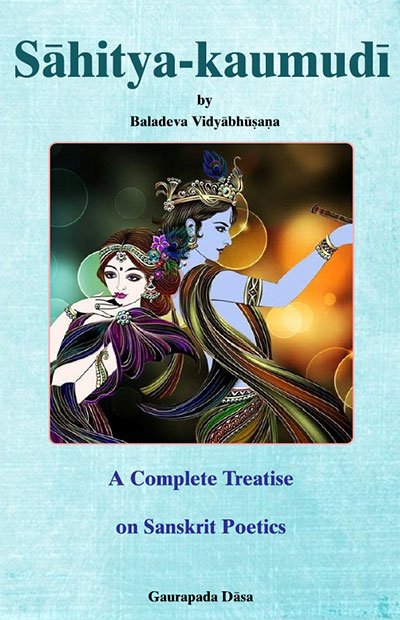Sahitya-kaumudi by Baladeva Vidyabhushana
by Gaurapada Dāsa | 2015 | 234,703 words
Baladeva Vidyabhusana’s Sahitya-kaumudi covers all aspects of poetical theory except the topic of dramaturgy. All the definitions of poetical concepts are taken from Mammata’s Kavya-prakasha, the most authoritative work on Sanskrit poetical rhetoric. Baladeva Vidyabhushana added the eleventh chapter, where he expounds additional ornaments from Visv...
Text 10.53
माला तु पूर्व-वत् ॥ १०.९४द्२ ॥
mālā tu pūrva-vat || 10.94d2 ||
The mālā variety of niraṅga rūpaka is like the previous one (mālopamā).
pūrveṣām iva pūrva-vat. ekasmin bahūnāṃ rūpaṇe mālā-rūpakam. upalakṣaṇam idam upamādeḥ.
This means it is like the mālā variety of the previous ones. When there is a representation of many upon one, that is mālā-rūpaka (a series of metaphors). This is a partial indication of upamā and so on.
Commentary:
Here Mammaṭa’s elaboration is: mālopamāyām ivaikasmin bahava āropitāḥ, “There are many upamānas for one upameya, as in the case of mālopamā.” Mammaṭa had referred to mālopamā in his elaboration of verse 411: iti bhinne ca tasmin ekasyaiva bahūpamānopādāne mālopamā (10.21). Narahari Sarasvatī Tīrtha and Śrīvatsa-lāñchana Bhaṭṭācārya say the above sūtra proves that the person who wrote the kārikās (definitional verses) also wrote the vṛttis (elaborations).[1]
